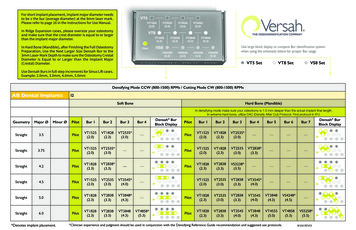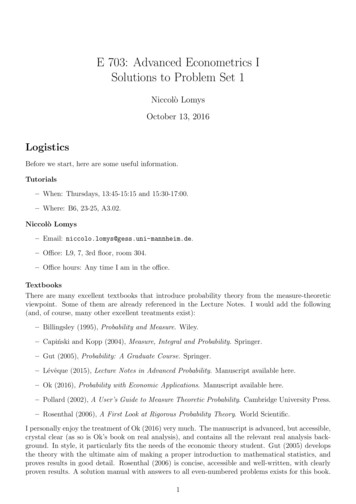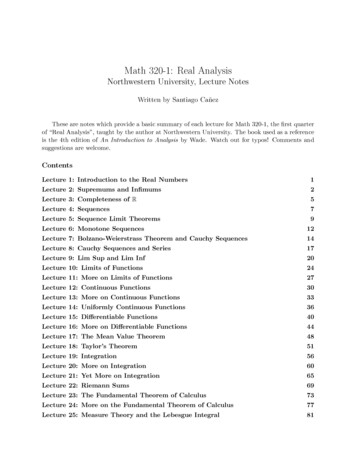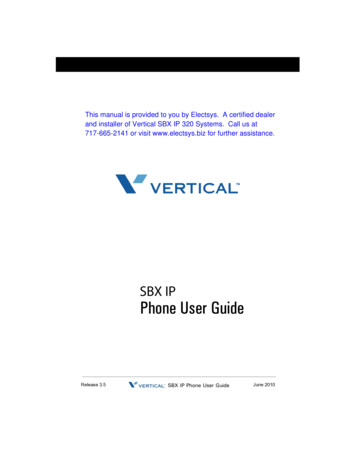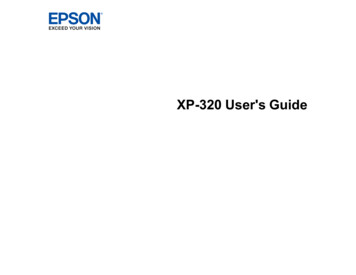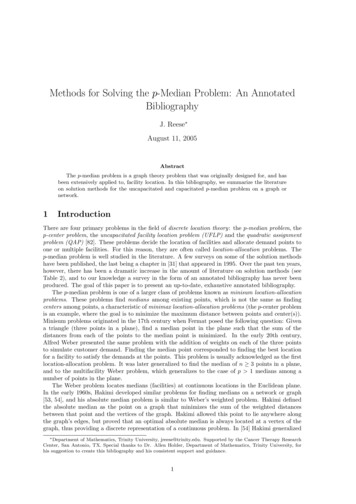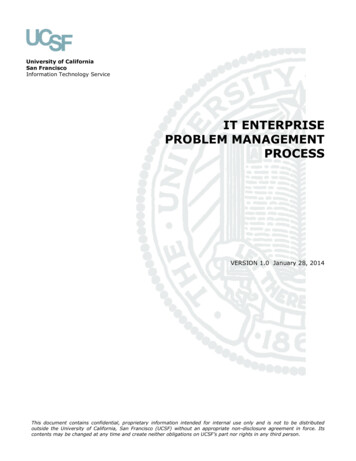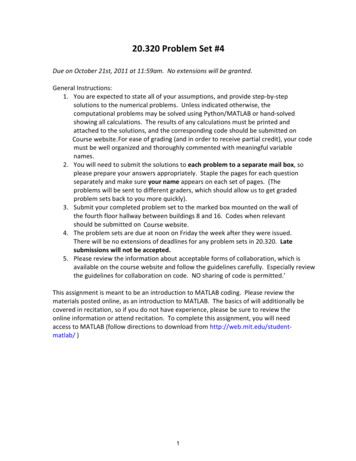
Transcription
20.320 Problem Set #4Due on October 21st 2011 at 11:59am. No extensions will be granted.General Instructions:1. You are expected to state all of your assumptions, and provide step-by-stepsolutions to the numerical problems. Unless indicated otherwise, thecomputational problems may be solved using Python/MATLAB or hand-solvedshowing all calculations. The results of any calculations must be printed andattached to the solutions, and the corresponding code should be submitted onCourse website. For ease of grading (and in order to receive partial credit), your codemust be well organized and thoroughly commented with meaningful variablenames.2. You will need to submit the solutions to each problem to a separate mail box, soplease prepare your answers appropriately. Staple the pages for each questionseparately and make sure your name appears on each set of pages. (Theproblems will be sent to different graders, which should allow us to get gradedproblem sets back to you more quickly).3. Submit your completed problem set to the marked box mounted on the wall ofthe fourth floor hallway between buildings 8 and 16. Codes when relevantshould be submitted on Course website.4. The problem sets are due at noon on Friday the week after they were issued.There will be no extensions of deadlines for any problem sets in 20.320. Latesubmissions will not be accepted.5. Please review the information about acceptable forms of collaboration, which isavailable on the course website and follow the guidelines carefully. Especially reviewthe guidelines for collaboration on code. NO sharing of code is permitted.'This assignment is meant to be an introduction to MATLAB coding. Please review thematerials posted online, as an introduction to MATLAB. The basics of will additionally becovered in recitation, so if you do not have experience, please be sure to review theonline information or attend recitation. To complete this assignment, you will needaccess to MATLAB (follow directions to download from http://web.mit.edu/studentmatlab/ ) 1
Question 1 - Plotting with MATLABOn homework one, you explored the secondary structure of yyglycoprotein using a ramachandran ploto ror that uestion, you were asked to use pyRosetta to find the phi and psi angles of the protein and plot them. can also make similar plotso To learn howto import files to MATLAB and plot, you'll make the same plot, this time using MATLABo Download the excel file containing the phi and psi coordinates from the course website. To import an excel file into MATLAB, try familiarizing yourself with the function hxlsreadTo To plot a scatter plot, consider the tool hscatteroT If you're not sure how to use these commands, try hhelp xlsreadT or hhelp scatterT ylease attach your MATLAB ramachandran plot, including axis labels and title generated with MATLABo Be sure to upload the om file you used to do this onto Course website! To make your life easier with figures in MATLAB , hfile publishT from your om file window will save all the figures generated into your current directory, inthe hhtmlT foldero a) Regenerate the ramachandran plot from homework 1, this time using MATLAB b) Now, suppose you want to look at only the phi or psi angles, not botho ylot phi vso residue number and psi vso residue number, each as a subplot on the same plot (Note this plot is not meant to be very informative, but gives you practice at usingsubplots in MATLAB the function hsubplotT will be helpful for you!)oc) Recall in the first homework, we estimated the amount of helical residues in the proteino Now, we'll do the same for helix and for beta sheeto Based on the angles below, what percentage of yyglyprotein is alpha helix? What percentage is beta sheet? ao Assume helices have phi from y90 to y10 and psi from y100 to y10 bo Assume Beta sheets are -phi from y150 to y10 and psi from 60 to 180o 2
Question 2 - Curve Fitting with MATLABAssume a ligand interacts with a protein to form a complex in the basic manor yrotein d gigand yym lomplex You performed an experiment where you were able to measure complex formation, after adding 100M ligand to your system, as a function of time, and want to see if you can determine the parameters kon and koffo The data you found is as follows 1 0.92050.99080.94020.91420.9083a) ylot this data using b) You expect your curve to fit the following function Using nonlinear fitting in , fit the curve to your data, and extract the parameters koff and kono Be sure to include your units! c) Include a new plot, with the data included as nd' signs, and overlay your best fit lineo Be sure to label all axes, and include a legend with your figureo The command hhold onT will likely help you hereo 3
Question 3 - Isothermal Titration CalorimetryA highythroughput drug screen can identify small molecules with high affinity for a receptor or other target of interesto Mmall molecule compounds can then be modified to increase affinity or specificity for a targeto Determining the thermodynamic properties of the drugytarget interaction can guide attempts to increase affinityo ror a compound of interest, MM10, the d for binding was estimated using the initial screen to be x10y7M at 5 lo a) Design an ITl experiment to determine enthalpic vso entropic contributions to the binding affinity (be sure to include protein and ligand concentrations, and relevant volumes) b) Based on your experimental design from part a, calculate the heat absorbed or released after the fifth injection of ligand (from injection t to injection 5 only!) , given H of binding y11,000 calmmolo Be sure to show all of your work! c) rind the change in ntropy (HM) of binding given the information above and any necessary information from parts a and b d) ITl does not work well for interactions that are extremely weak or extremely strongo ylease explain this observationo 4
MIT OpenCourseWarehttp://ocw.mit.edu20.320 Analysis of Biomolecular and Cellular SystemsFall 2012For information about citing these materials or our Terms of Use, visit: http://ocw.mit.edu/terms.
solutions to the numerical problems. Unless indicated otherwise, the computational problems may be solved using Python/MATLAB or hand-solved showing all calculations. The results of any calculations must be printed and attached to the solutions, and the corresponding code should be submitted on For ease of grading (and in order to receive partial credit), your code must be well organized and .
